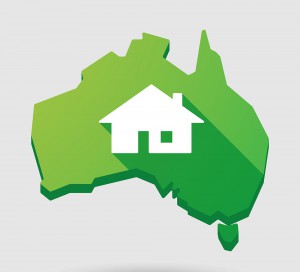What should you do in the current “interesting” property markets?
Is it time to be fearful or is it the right time to be greedy?
I know many investors are confused with concerns remaining about the Coronavirus, high unemployment and the many mixed messages forecasting what’s ahead for our economy and our property markets.
While we’re officially out of recession there are clearly many headwinds ahead and we we don’t have to look far to be reminded that the Coronavirus hasn’t gone away.
I’ve noticed two types of emotion in those interested in property:
- Last year as it became clear our markets wouldn’t crash like some property pessimists predicted, FOBE was the predominant sentiment – Fear Of Buying too Early – home buyers and investors trying to time the market wondering “what if prices do fall further?”
- Now FOMO (Fear Of Missing Out) is creeping back as house prices are rising around Australia.
It is said that the 2 most powerful emotions that drive markets are fear and greed.
In fact master investor Warren Buffet advised: “I’ll tell you how to become rich….Be fearful when others are greedy and be greedy when others are fearful.”
So today I’d like to give you my thoughts on this with a lesson from history…
Twenty eight years ago, as Australia was working its way out of the recession we had to have, few would have thought of property as a good investment.
It was 1993 and interest rates had come down 3 percent over the previous 2 years as the Reserve Bank tried to stimulate the economy and our faltering property markets.
By the way… this brought interest rates down to 10%, the lowest level they had been for 13 years.
Having just experienced the first Australian recession in a long time, consumer and business confidence was low, there were too many properties for sale, buyers were scarce and some properties, particularly in top end suburbs, had plummeted in value.
A few years earlier on Black Monday of October 1987 a stock collapse of unprecedented size hit Wall Street and the effects reverberated around the world.
Interestingly I remember that day well. I can clearly picture in my mind that we were on holiday in Sydney when we heard the news and didn’t fully appreciate the severity of the consequences.
However, while the stock market eventually recovered, the lumbering savings and loans industry in the USA (which financed many American homes) was beginning to collapse, leading to a property funding crisis which put the financial well being of millions of Americans in jeopardy.
In turn the financial contagion that spread to the rest of financial sectors led to a recession which hit other countries whose economies were previously healthy but were economically closely linked to the United States.
This included Canada, the United Kingdom and Australia.
What was happening in Australia back then?

Well…to buy a typical house in mid 1993 you would have paid around:
- $173,000 in Sydney;
- $138,00 in Melbourne;
- $121,00 in Brisbane;
- $102,000 in Perth;
- $156,000 in Canberra;
- $110,00 in Adelaide
- $96,000 in Hobart and
- $132,000 in Darwin.
But over the subsequent 3 decades the value of many well located capital city properties around Australia quadrupled, underscoring the wealth of many of today’s Baby Boomers and creating significant property empires for those who took property investment seriously.
Interestingly today’s environment reminds me of those times 28 years ago – we are working our way out of the recession we decided to have (rather than the one we had to have in the 1909s.)
And just like then, many of the same arguments are being floated by commentators explaining why property values can’t keep increasing as they did over the previous three decades.
I accept that much of the gains over that time were related to structural changes that will not be repeated.
The two significant structural events that caused the massive rise in property values over the last three decades were:
- The Reserve Bank kept inflation within a narrow band meaning interest rates could fall at a time when time banks became deregulated and this allowed new non-bank lenders like Aussie John Symond to make cheap finance available for borrowers and over time interest rates kept falling and credit was easily available.
- At the same time wages grew and there were more two-income households. This allowed more Australian families to buy new homes or upgrade their existing homes as their families grew.
These factors won’t carry our markets forward in the future, in fact they played out a few years ago and haven’t been relevant for much the last decade.
- We are currently in a low inflationary, low interest rate environment (not only in Australia but around the world) and there is really no room to lower interest rates.
- The effect of the extra spending power of low interest rates has washed its way through the system.
- We are now in a period of lower wages growth and more part-time jobs so it’s unlikely that the average Australian family will have more cash in their pockets to spend on property
- There are still economic fallout from the recession we decided to have.
Here’s why I believe property values will increase in the short term.
You’ve heard me say it before… property is a game of finance with some houses thrown in the middle.
If the ability to borrow money is easy then property values increase; and when the banks tighten the screws and make it harder to borrow, property values languish – just look back over the few years before and after the Haynes Royal Commission into Banking when lenders got jittery and made it harder to borrow.
On the other hand, as many people learned last year, neither a pandemic, a recession nor rising unemployment decimated our housing market, falling interest rates make finance cheap was much more important.
In the past the RBA made borrowing easier and cheaper by lowering interest rates, but that can’t really happen any more.
However, the big game changer that will bolster our property markets moving forward is the anticipated loosening of restrictions on banks’ lending practices in March this year which will give the average home buyer and property investor significantly more borrowing capacity.
More than that, there is a perfect storm of positive factors developing for our property markets – a confluence of multiple growth drivers which will propel our property markets into 2021 and 2022: –
- Our economy is improving and moving forward further jobs creation, consumer confidence and business confidence (leading to spending and employment) will underpin our housing markets.
- Auction clearance rates have been consistently strong in the last few months of 2020, not just in the two big auction capital of Melbourne and Sydney but around Australia.
- More buyers and sellers are in the market and transaction numbers have increased considerably.
- At the same time the banks are keen to write new business – another positive for our housing markets.
- Bank loan deferrals have been falling – there’s no chance of an avalanche of forced mortgagee sales as many were worried about.
- The latest rate cut and the “guarantee” of rates remaining low for at least 3 years, will give home buyers and investors confidence.
Why our property values are guaranteed to increase in the long term
Having said that, I still see strong underlying long-term fundamentals for our property markets.
But don’t get me wrong…
I’m not suggesting we’ll have widespread double digit growth in property values for a while again (even though some suburbs will still enjoy still strong capital growth.) 
However, we don’t have the high rates of inflation like we had in the 1980’s and 90’s that required that type of capital growth rates to produce a real (after inflation) rate of return.
While it’s important to understand that while many factors like interest rates, supply and demand and market confidence, affect a country’s property prices in the short term, in the long term prices are driven by two main factors:
- Population growth, and
- The wealth of the nation
Despite our international borders currently being closed, Australia’s strong future population growth is a given and as a matter of fact so is our increasing wealth.
And this is positive news for the long-term growth of property prices.
The fact remains that as long as people keep having children and residents from other countries seek to settle on our shores, Australia’s population will keep growing at a rate faster than almost every other developed nation.
Australia has a business plan to significantly increase its population.
Australia’s population was forecast to grow to 30 million people by 2030. While we may now only grow to 29 million people in that timeframe, that’s still a significant increase in our population over the next decade.
And there are suggestions that our population could reach 40 million people by 2050

Until recently 55% of our population growth was due to immigration and, in general, these are well educated people (particularly from China and India) who are in their twenties and thirties which is the family formation stage of their lives.
Fact is: we are going to need to whole cities of new immigrants to replace the 5 million or so Baby Boomers who are going to leave the workforce over the next 15 years.
These new residents will boost our country’s economic well being through the revenue raised from income taxes and all the goods and services they will buy.
And yes, that includes property.
Of course this means with more and more of us wanting to live in the same four big capital cities (but particularly Melbourne and Sydney which are the economic powerhouses of Australia), and even in the same suburbs of those capital cities, our old friend the supply and demand ratio will keep pushing up the value of well-located inner suburban properties. 
Inevitably this will make property unaffordable for some who will remain tenants, however others will be able to afford these higher priced properties.
It also means that apartments and townhouses are likely to become the style of housing in strong demand as more people swap their backyards for balconies and courtyards; partly because of cost but also because of lifestyle choices.
They’ll be trading space (big backyards) for place (being in the right location.)
And now post Covid neighbourhood will be more important than ever – something people call the “Third Place.”
Our first place is home and our second place is work or the office, but during Covid for many around Australia the ability to go to a third place that was taken away.
It may be a favourite café, a gym or a place of worship and even local shops and pubs.
They missed that feeling and connection to others, having an outlet to take a break from family or colleagues for a short period to reset.
A gym or exercise centre has been substituted for a favourite walking or cycling path with green space and fresh air.
So, all these features combined, will be a major requirement and will create huge demand moving forward.
These are all features of the 20-minute neighbourhood, that will be built around convenience.
Wouldn’t it be nice is all the things you need in a day would be just a short walk away?
In urban planning circles, it’s a concept known as the 20-minute neighbourhood.
Understanding these factors forms part of the research data we use at Metropole to help our clients find investment grade properties, or A grade homes for owner occupation.
If you’d like to get the independent, award-winning team at Metropole on your side to help you through the maze of mixed messages about the property market, please click here and leave us your details or call us on 1300 METROPOLE
Then there’s all the good economic news
If you’re reading the general media you’d be forgiven for feeling a little pessimistic about the state of our nation.
Maybe you missed some of the good news…
The recession we experienced in 2020 wasn’t due to a fundamental problem with our economy – it was our government putting the economy on hold to get a health problem under control.
But our economy is on the move again and likely to keep grow strongly over the next couple of years; and despite the geo political and trade challenges we will are likely to face, Australia’s economy is well positioned to keep growing strongly.
The bottom line:
While nothing in life is guaranteed, if like me, you are confident that Australia has a prosperous future, and you agree that our population is going to keep increasing and that most of us are going to want to live in much the same parts of our lucky country; you can understand why I see a strong long-term future for our capital city property markets.
Sure there is a risk in buying property, but don’t forget there is also a different risk in not buying!
So what will you do about this?
Owning real assets is a powerful wealth creator and with our property markets moving on a whole new generation of property millionaires will be created over the new decade.
However, if history repeats itself, and it most likely will, most people who get involved in property investment will not become financially independent.
Many will buy the wrong property or at the wrong time or in the wrong location.
With so many mixed messages out there about what type of what makes a good property investment it’s hard to know who to listen to.
It’s hard to know who to trust.
If you’re looking for independent advice, no one can help you quite like the independent property investment strategists at Metropole.
Remember the multi award winning team of property investment strategists at Metropole have no properties to sell, so their advice is unbiased.
Whether you are a beginner or a seasoned property investor, we would love to help you formulate an investment strategy or do a review of your existing portfolio, and help you take your property investment to the next level.
If you’re looking at buying your next home or investment property here’s 4 ways we can help you:
- Strategic property advice. – Allow us to build a Strategic Property Plan for you and your family. Planning is bringing the future into the present so you can do something about it now! This will give you direction, results and more certainty. Click here to learn more
- Buyer’s agency – As Australia’s most trusted buyers’ agents we’ve been involved in over $3.5 Billion worth of transactions creating wealth for our clients and we can do the same for you. Our on the ground teams in Melbourne, Sydney and Brisbane bring you years of experience and perspective – that’s something money just can’t buy. We’ll help you find your next home or an investment grade property. Click here to learn how we can help you.
- Wealth Advisory – We can provide you with strategic tailored financial planning and wealth advice. Click here to learn more about we can help you.
- Property Management – Our stress free property management services help you maximise your property returns. Click here to find out why our clients enjoy a vacancy rate considerably below the market average, our tenants stay an average of 3 years and our properties lease 10 days faster than the market average.
from Property UpdateProperty Update https://propertyupdate.com.au/is-it-time-to-be-fearful-or-greedy-in-property/
No comments:
Post a Comment